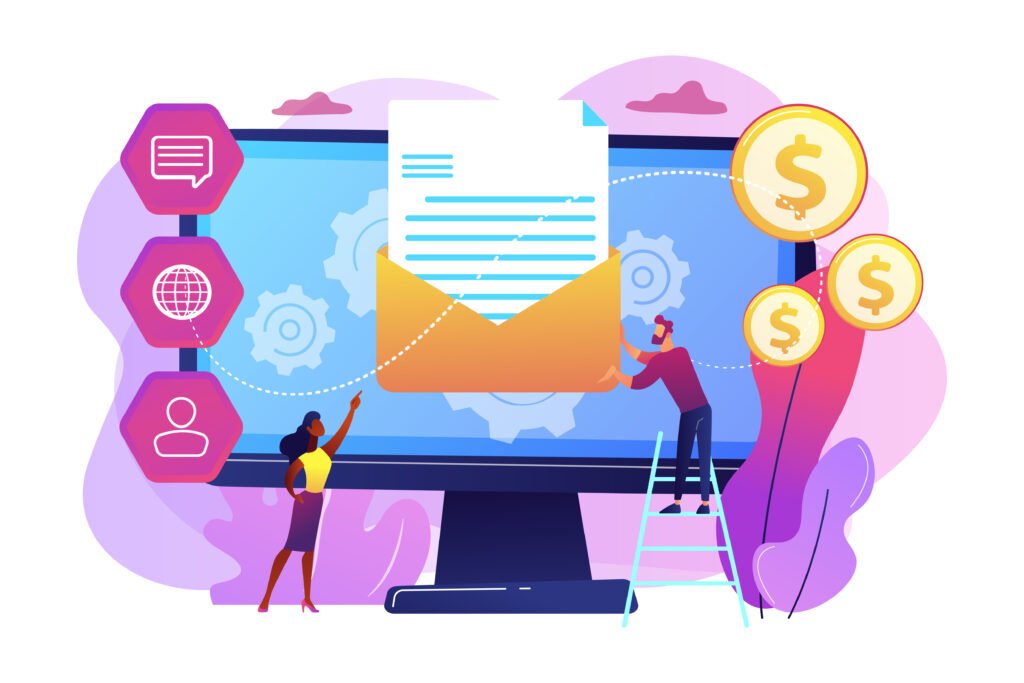In the ever-evolving financial landscape, where information overload and competition are fierce, establishing trust with potential clients is paramount for financial advisors. While traditional marketing methods still hold value, email marketing for financial advisors has emerged as a powerful tool to cultivate lasting relationships and build credibility in the digital age.
This targeted approach allows advisors to connect with prospects and clients directly, fostering a sense of approachability and expertise. But how can email marketing be leveraged to build trust and credibility? Here are key strategies:
1. Content is King: Provide Valuable Insights
Financial decisions can be daunting. People seek guidance from those they perceive as knowledgeable and trustworthy. Email marketing allows advisors to establish themselves as thought leaders by consistently delivering valuable content.
- Focus on educational content: Craft informative emails that address common financial concerns relevant to your target audience. This could include insights on retirement planning, investment strategies, tax optimization, or navigating economic trends.
- Offer free resources: Provide downloadable guides, white papers, or access to exclusive webinars. This not only positions you as an expert but also incentivizes sign-ups for your email list.
- Curate industry news: Share relevant and timely articles or snippets from reputable financial publications, demonstrating your awareness of current events and ability to stay ahead of the curve.
By consistently delivering valuable content, you position yourself as a trusted resource, fostering trust and credibility with your audience.
2. Personalization is Key: Tailor Your Message
Generic emails get lost in the inbox clutter. Personalization, on the other hand, shows you care and understand your audience’s unique needs.
- Segment your email list: Categorize your subscribers based on demographics, financial goals, or investment interests. This allows you to tailor email content to resonate more effectively with each segment.
- Use subscriber names: A simple salutation with the subscriber’s name personalizes the email and creates a sense of connection.
- Highlight relevant past interactions: Reference previous conversations or financial goals discussed to demonstrate you’re invested in their specific situation.
Personalization shows you value your audience and understand their needs, building trust and strengthening relationships.
3. Build Trust with Transparency and Credibility
Financial matters are personal. Building trust requires transparency and showcasing your qualifications.
- Introduce yourself and your firm: Craft a compelling “about us” section within your emails, highlighting your experience, qualifications, and areas of expertise.
- Showcase client testimonials: Include positive client reviews or success stories (with permission) to demonstrate the impact of your services and build social proof.
- Comply with regulations: Ensure all email marketing practices adhere to industry regulations and data privacy laws. This demonstrates professionalism and fosters trust with your audience.
Transparency and a commitment to ethical practices go a long way in building trust with potential clients.
4. Consistency is Key: Maintain Regular Communication
Building trust is a marathon, not a sprint. Regular communication through email marketing helps you stay top-of-mind with your audience.
- Develop an email schedule: Determine a consistent frequency for sending emails, whether weekly, bi-weekly, or monthly.
- Maintain a consistent brand voice: Develop a professional and friendly tone that aligns with your brand identity and resonates with your target audience.
- Offer clear calls to action: Don’t leave your audience hanging. End each email with a clear next step, whether it’s scheduling a consultation, downloading a resource, or visiting your website for further information.
Regular communication fosters familiarity and strengthens the connection with your audience, ultimately building trust and credibility.
5. Measure and Refine: Track Your Results
Effective email marketing requires ongoing monitoring and adaptation. Leverage email marketing platforms that offer analytics tools to track key metrics such as open rates, click-through rates, and unsubscribe rates.
- Analyze open rates: Low open rates might indicate a need for more compelling subject lines or a shift in content strategy.
- Track click-through rates: High click-through rates suggest your audience is engaged with your content and calls to action.
- Monitor unsubscribe rates: A high unsubscribe rate might indicate subscribers are no longer finding value in your emails. This could be a sign to refine your content or segmentation strategy.
By tracking and analyzing your results, you can continually refine your email marketing efforts to deliver the most valuable content to your audience, ultimately building stronger relationships and fostering trust.
Conclusion
Email marketing for financial advisors is a powerful tool for building trust and credibility in the digital age. By consistently delivering valuable content, personalizing your message, maintaining transparency, and fostering regular communication with your audience, you can position yourself as a trusted advisor and cultivate long-lasting client relationships.
Pro Tip
Take control of your client communication and build lasting trust. Get started with ConvertKit’s powerful email marketing tools for free!


